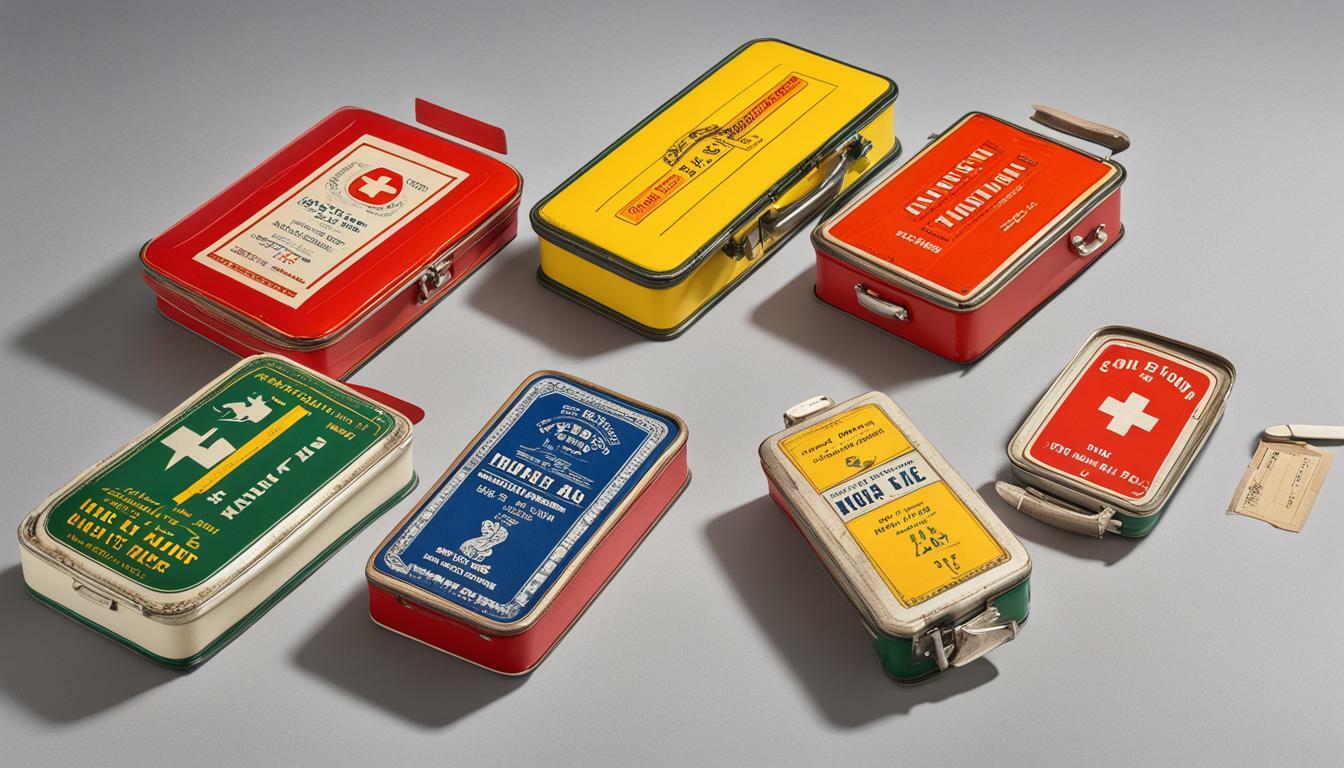Welcome to our exploration of the evolution of first aid kit packaging, where we will delve into the latest trends and designs that have revolutionized this essential product. As we know, first aid kits are crucial in emergencies, and packaging plays a significant role in their accessibility and usability. Over the years, packaging design has evolved to meet the changing needs and preferences of users, making first aid kits more compact, user-friendly, and environmentally sustainable.
In this article, we will take a historical perspective and examine the early designs of first aid kit packaging. We will explore the current trends in first aid kit packaging, highlighting some of the innovative design concepts that have emerged in the industry. Furthermore, we will examine how sustainability, user feedback, and technology have influenced the evolution of first aid kit packaging, creating packaging designs that cater to specific use cases. Finally, we will speculate on the future of first aid kit packaging design, exploring emerging technologies, potential advancements in materials and the role of user feedback in shaping this field.
Join us as we explore the exciting world of first aid kit packaging design!
The Importance of First Aid Kit Packaging
First aid kit packaging designs have come a long way since the early days of simple metal boxes. Today, well-designed packaging not only enhances the usability and accessibility of first aid kits, but it can also promote safety and awareness. In fact, the packaging is often the first line of defense in an emergency situation, making it essential to ensure it is user-friendly and effective.
With the increasing focus on safety and preparedness, first aid kit packaging trends have evolved to meet the changing needs and expectations of users. Designers are paying more attention to the look, feel, and functionality of the packaging to ensure it aligns with modern sensibilities and user preferences.
| First Aid Kit Packaging Designs | First Aid Packaging Trends |
|---|---|
| Clear labeling and color-coding | Enhanced usability and accessibility |
| Compactness and portability | Convenient and easy to carry |
| Customizable compartments | Ability to tailor the kit to specific needs |
Some of the most popular trends in first aid kit packaging include clear labeling and color-coding, which make it easy for users to quickly identify the contents of the kit. Compactness and portability are also important considerations, especially for outdoor enthusiasts, travelers, and those who need to carry a kit with them at all times. Customizable compartments are another popular trend, allowing users to tailor their kit to suit their specific needs.
In addition to enhancing usability, first aid kit packaging designs can also help promote safety and awareness. Kits with bright, well-designed packaging are more likely to be noticed and used in an emergency situation. This is particularly important in workplaces and other settings where safety is a priority.
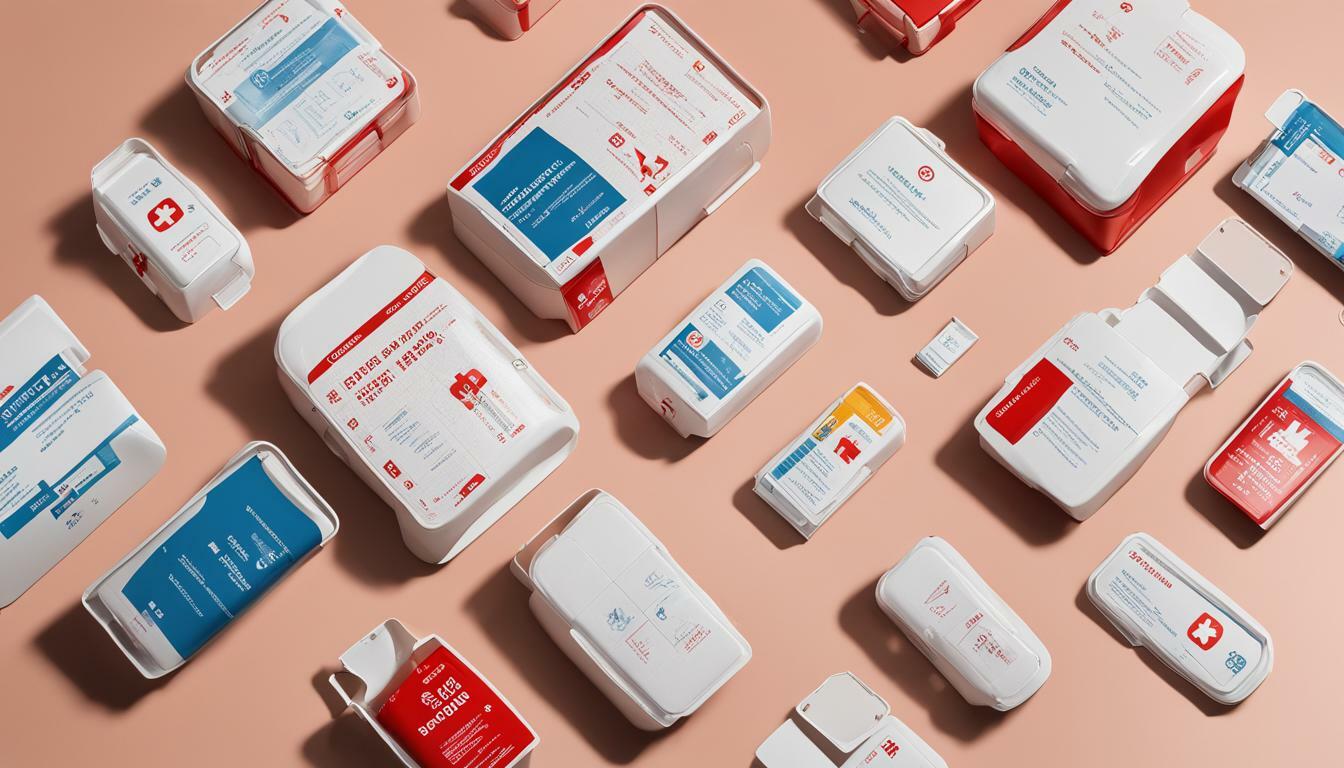
As the focus on safety and preparedness continues to grow, it is likely that first aid kit packaging trends will continue to evolve. Designers will need to stay up-to-date with the latest technologies, materials, and user feedback in order to create packaging that is effective, user-friendly, and meets the needs of a wide range of users.
Early First Aid Kit Packaging Designs
The evolution of first aid kits has come a long way, and it’s important to take a step back to appreciate the early designs that paved the way for the modern kits used today. The first aid kit concept has been around since the 1800s, but the first standardized kits were developed during World War I. These kits were initially designed for use by soldiers and contained basic supplies such as bandages, antiseptics, and pain relievers.
Early first aid kits were simple in design, with basic functionality and materials to meet the needs of the time. The kits were usually made of metal or wood, with compartments to organize the contents. The materials used for bandages and other medical supplies were often made of natural materials such as cotton or linen. These materials were cost-effective and easily accessible, making them ideal for mass production.
As time progressed, the need for more advanced medical supplies grew. The Korean and Vietnam Wars saw the development of better first aid kits, which included tourniquets, morphine, and other advanced medical supplies. These kits were designed to keep soldiers alive long enough to reach medical treatment.
The evolution of first aid kit packaging was not limited to military use. In the 1970s, first aid kits became more accessible to the public, and the designs became more consumer-friendly. The packaging evolved from metal and wood to plastic, which was lighter and more durable. This allowed for more portable kits, which could be easily stored in cars, homes, and workplaces. In recent years, the move towards sustainable materials has led to the development of eco-friendly first aid kits, which use materials such as bamboo and recycled plastic.
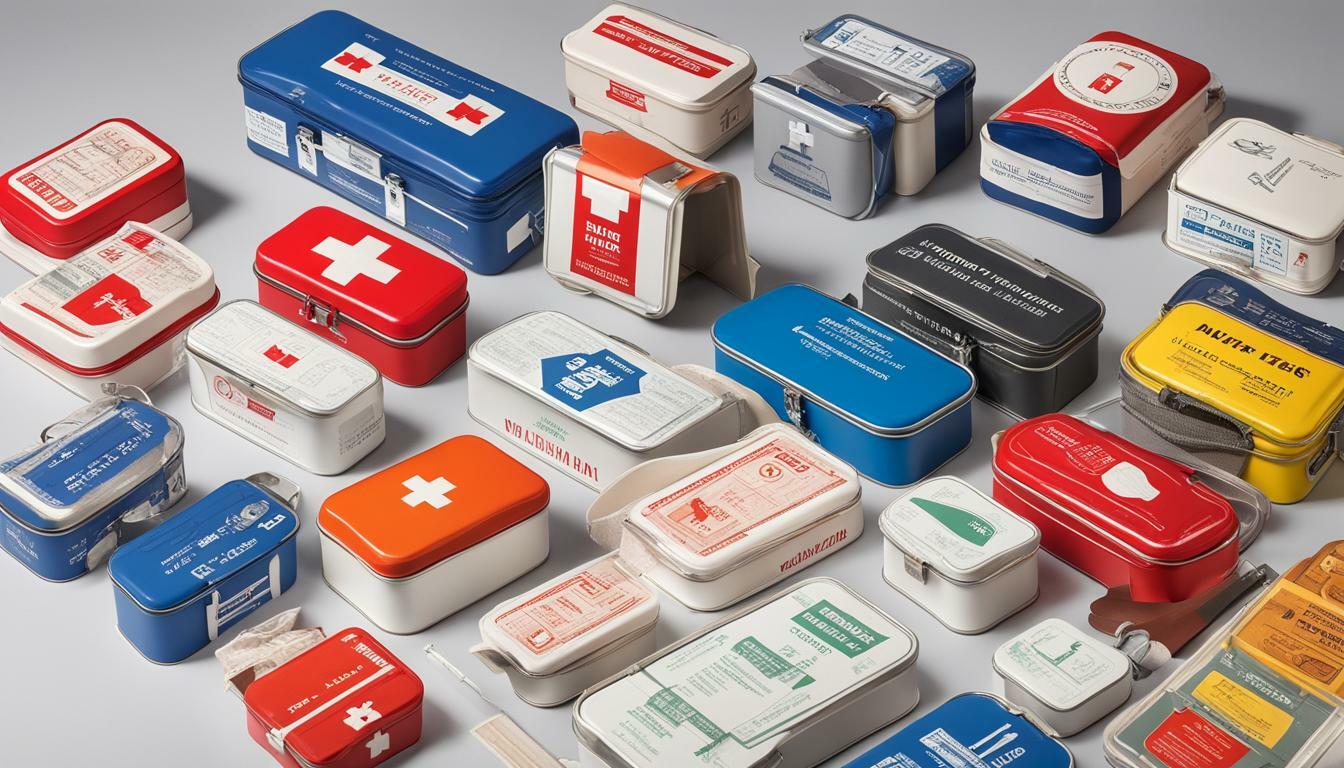
The evolution of first aid kit packaging has come a long way, from basic metal and wood designs to advanced, customizable kits that cater to specific needs. As technology continues to evolve, it’s exciting to think about how first aid kit packaging will continue to improve and adapt to meet the changing needs of users.
Trends in First Aid Kit Packaging
First aid kit packaging has undergone significant changes over the years, with designers continually incorporating innovative ideas to make kits more user-friendly and accessible. Keeping up with trends is important to ensure that kits meet the needs of users and promote safety. Let’s explore some of the latest trends in first aid kit packaging:
- Color Coding: There has been a recent trend towards using color coding in first aid kit packaging to make identification of contents easier, even under stressful situations. For instance, a red bag may contain items for bleeding control while a green one can hold essential medications.
- Clear Labeling: Clear labeling is another trend that has gained popularity in recent times. Clear labels provide easy identification of contents, while pictograms help overcome language barriers. The text size and font used are also crucial to enhance legibility.
- Compartmentalization: Compartmentalization has been around for a while, but its popularity remains high. It allows contents to be neatly arranged, making it easier to locate the necessary items during an emergency. Some kits come with removable dividers to allow for customization based on the nature of the emergency at hand.
These trends have revolutionized how first aid kits are designed, making them more user-friendly and accessible. Designers are continually incorporating innovative ideas to ensure that first aid kit packaging evolves to meet the ever-changing needs of the users.
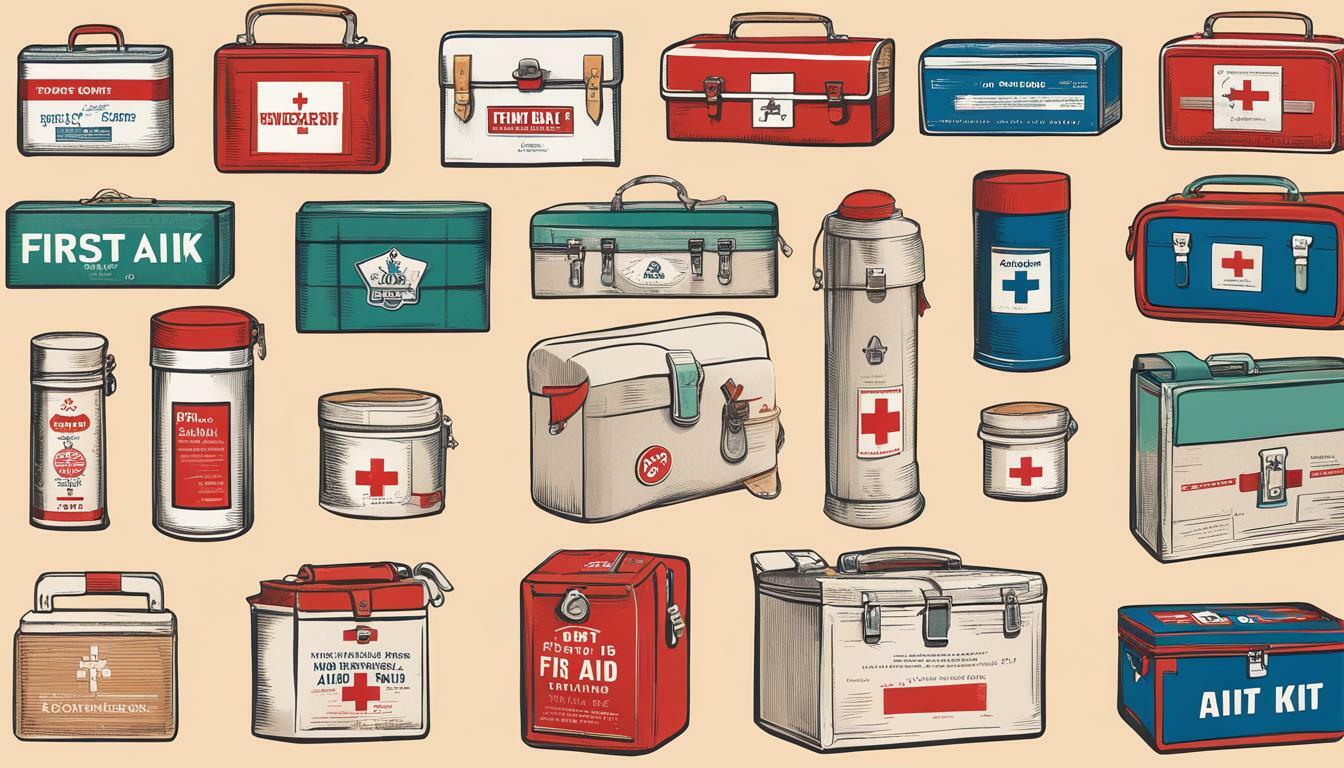
Design Innovations in First Aid Kit Packaging
In recent years, designers have been exploring innovative concepts to create first aid kits that are not only functional but also customizable and user-friendly. These design innovations have resulted in kits that are easier to carry and access, offer better protection for contents, and are more sustainable.
One such design trend is compactness – kits are being designed to be smaller and more lightweight, making them easier to carry and store. For example, some kits are now available in the form of belts, arm bands, and even keychains, making them easily accessible for outdoor activities and travel. The image below demonstrates a compact first aid kit:
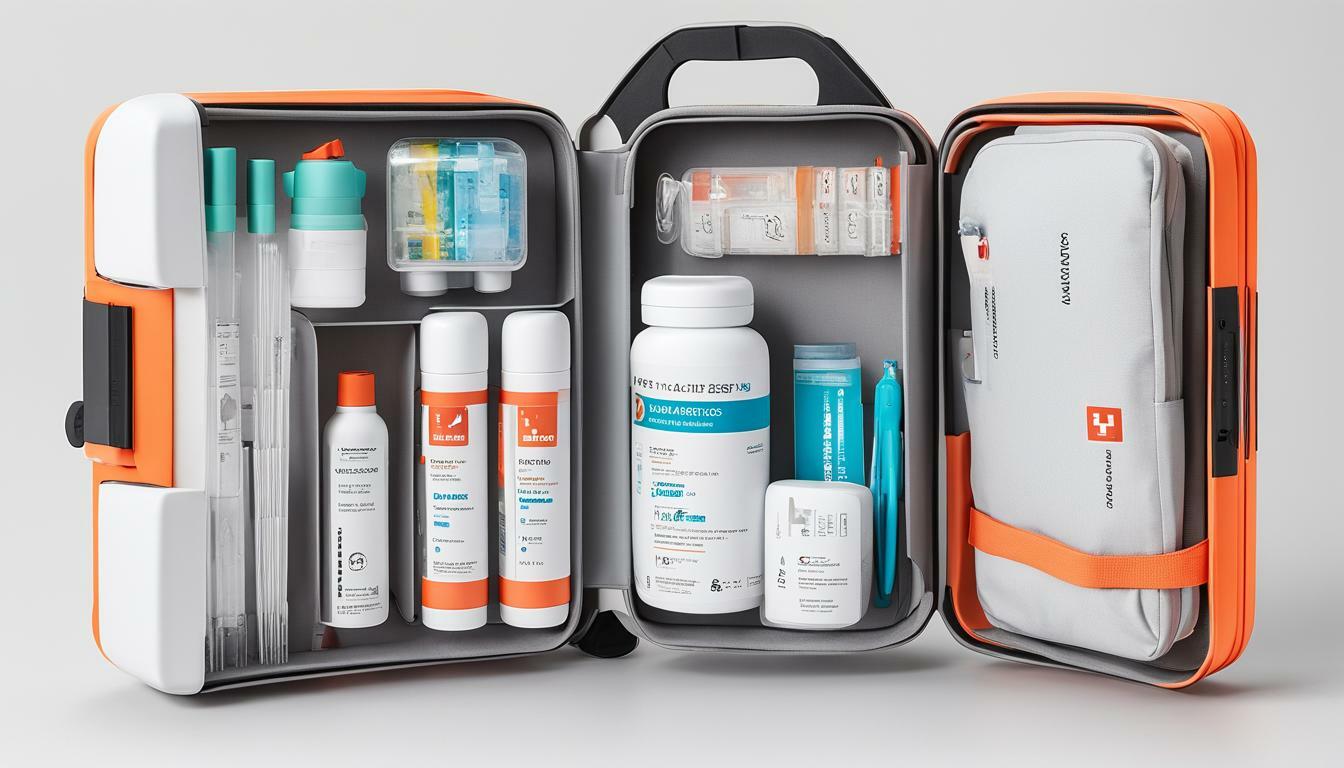
Waterproofing has also emerged as an important feature in first aid kit packaging design. Kits that are waterproof provide greater protection against moisture and environmental factors, making them ideal for outdoor activities and harsh weather conditions.
Customizable compartmentalization is another design feature that has gained traction. Kits with adjustable dividers allow users to organize their contents to meet their specific needs. This is especially useful for those with specific medical conditions or for those who require certain medications.
One key innovation in first aid kit packaging design is the use of eco-friendly materials. As awareness of environmental issues grows, designers are exploring the use of biodegradable and recyclable materials to reduce waste and promote sustainability. This is exemplified by kits made from recycled plastics or bioplastics, which can be used repeatedly without causing harm to the environment.
Overall, the evolution of first aid kit packaging design has been driven by a mix of user needs, technological advancements, and environmental concerns. As such, designers continue to explore innovative concepts to create kits that are not only functional but also meet the needs of a diverse range of users and scenarios.
Sustainable Packaging Solutions
As the world becomes increasingly conscious of the impact of pollution and climate change on our planet, sustainability has emerged as a key design consideration in first aid kit packaging. With an estimated 5.25 trillion pieces of plastic debris in the ocean, and single-use plastic causing significant environmental harm, designers are striving to create eco-friendly and recyclable packaging solutions that reduce waste and carbon footprint.
One of the most effective ways that first aid kit packaging designs are becoming more sustainable is through the use of biodegradable and compostable materials. Materials like bamboo, paperboard, and vegetable-based plastics not only reduce the environmental impact of packaging, but they also provide a more natural and aesthetically pleasing look to the kits.
Another trend that is gaining momentum in first aid kit design evolution is the reduction of single-use plastic. For example, some kits now come with refillable bottles, allowing users to fill them with their preferred first aid solutions rather than buying pre-packaged items. Others may have reusable packaging, such as tins or pouches, which can be repurposed after the contents have been used up.
Recycling programs are also being implemented, allowing users to return used packaging for disposal or recycling. This not only reduces waste but also encourages responsible disposal of packaging and promotes a circular economy that minimizes the environmental impact of production and consumption.
Overall, sustainability is a crucial factor in the design of first aid kit packaging, as responsible packaging practices will help to preserve the environment for future generations.
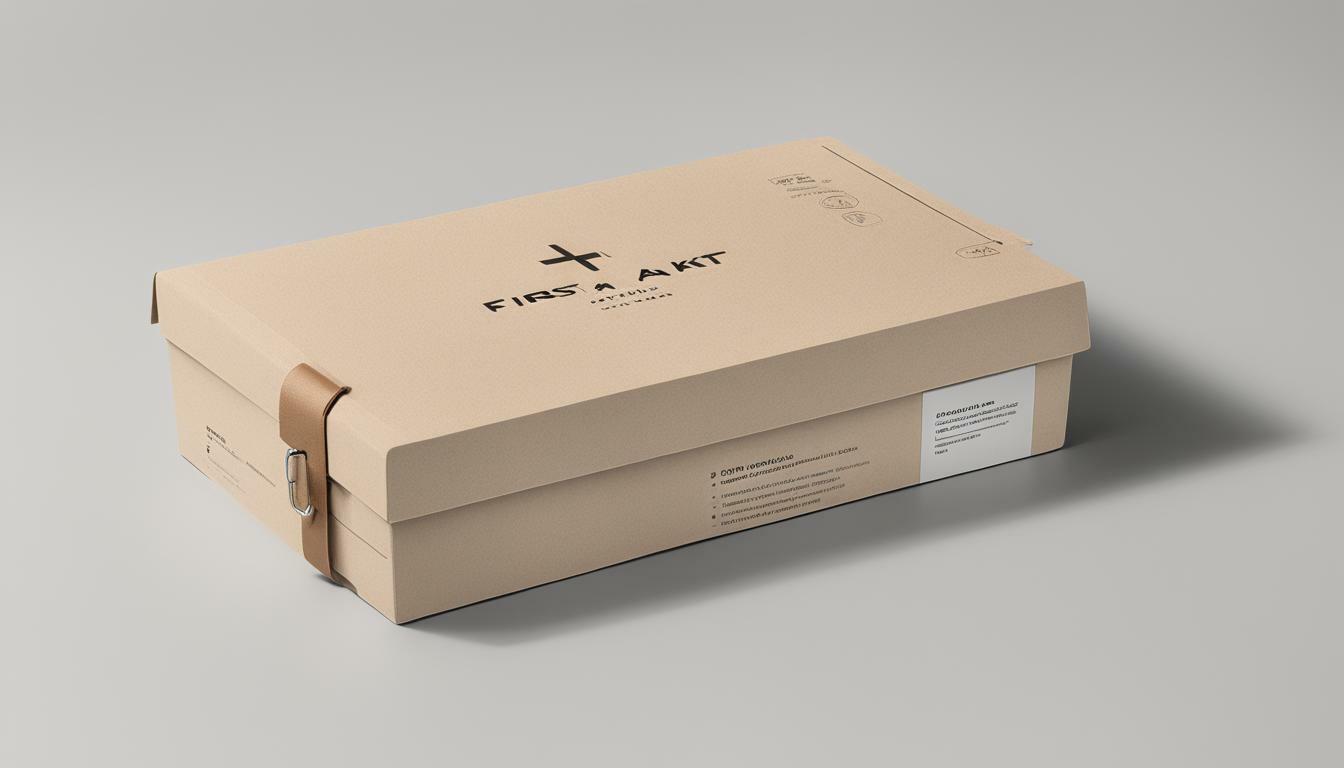
User-Centered Design Approach
First aid kit packaging must prioritize the needs and preferences of users to ensure that it is easy to use and accessible to everyone. Designers are taking a user-centered approach to first aid kit packaging, which involves gathering feedback from users, analyzing usage patterns, and integrating ergonomic and accessibility considerations into the design. As a result, modern first aid kits are becoming more intuitive and user-friendly, with design elements that cater to a wide range of users.
Colour coding is one of the most popular design trends that have emerged from this approach. By assigning distinct colours to items of different functions, it is easier to identify and locate items in a first aid kit, especially during an emergency. Furthermore, clear labeling of contents and usage instructions also enhances accessibility and usability.
Another key trend in user-centered design for first aid kit packaging is compartmentalization. By dividing the kit into separate sections, it is easier to locate specific items and ensures that the kit remains organized and clutter-free. This design element is particularly useful for larger first aid kits or for kits that are used in workplaces or public areas.
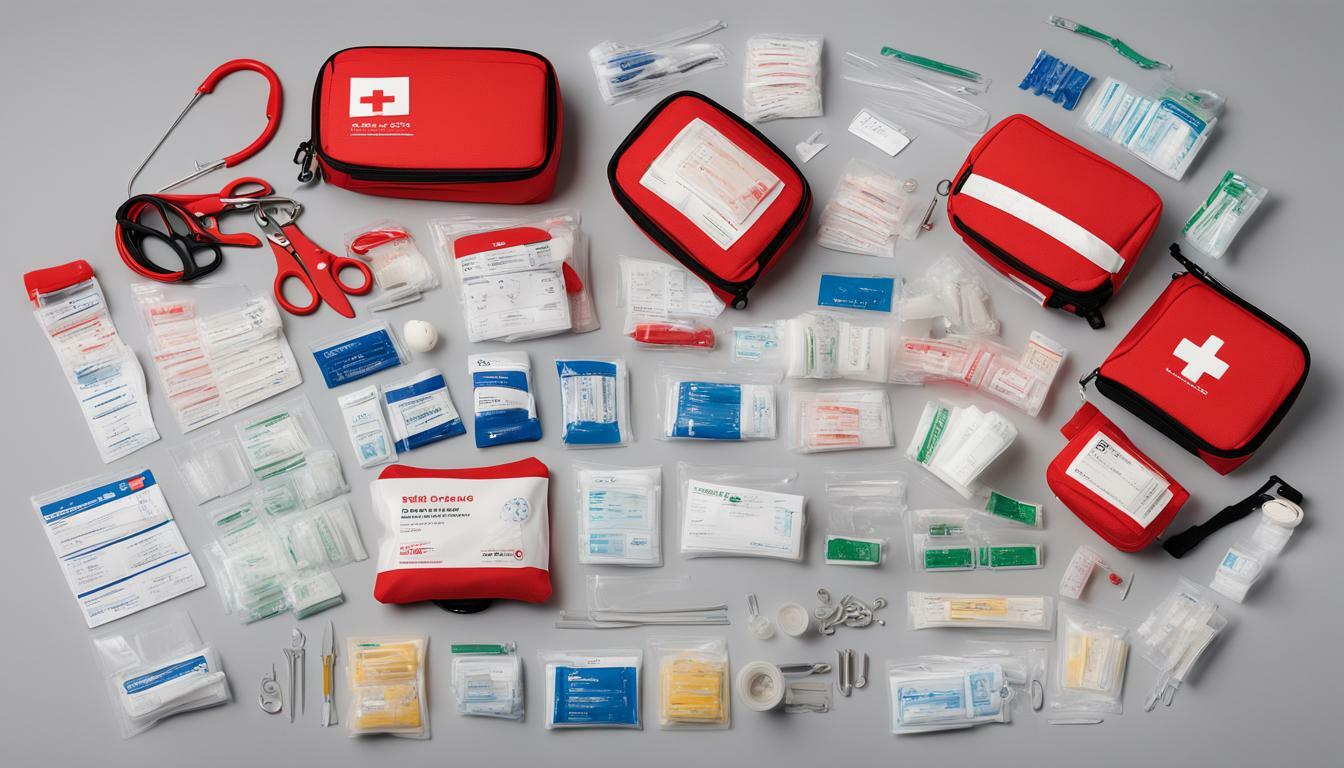
Finally, designers are taking an inclusive approach to first aid kit packaging, ensuring that it is accessible to everyone, regardless of age, gender, or ability. This involves incorporating features such as larger text sizes, tactile markings, and easy-to-grip handles, which can be especially helpful for people with visual impairments or mobility issues.
By prioritizing the needs and preferences of users, user-centered design for first aid kit packaging is transforming the way we think about first aid. The design elements discussed above have contributed to making first aid more accessible, intuitive, and inclusive, with the potential to save lives during an emergency.
Integration of Technology in First Aid Kit Packaging
The evolution of first aid kit packaging is not limited to its physical design and materials, it also includes the incorporation of modern technology. The integration of technology in first aid kit packaging has brought about radical changes in the capabilities, functionality, and accessibility of these essential first aid tools.
One remarkable technological advancement in first aid kit packaging is Near Field Communication (NFC) technology. Some first aid kits now come equipped with NFC tags, which when scanned with a smartphone, provide access to a comprehensive digital guide on first aid and emergency procedures. This is a significant leap forward in providing fast and accurate first aid information to users in emergency situations.

Another notable integration of technology in first aid kit packaging is the use of sensors. Some first aid kits now feature smart sensors that monitor temperature, humidity, and other environmental factors, providing users with real-time alerts on the condition of the kit’s contents. This technology has revolutionized the way first aid kits are monitored, ensuring that they are always ready for use when needed.
Additionally, digital guides have replaced traditional paper-based first aid manuals, making it easier for users to access information on-the-go. Some of these guides are even interactive, allowing users to input their symptoms and receive tailored instructions on how to administer first aid treatment. The integration of digital technology has made it possible to provide comprehensive first aid information in a compact and user-friendly format.
The use of technology in first aid kit packaging is still emerging, and there is vast potential for further development in this area. As technology continues to evolve, it is likely that we will see more innovative features in first aid kit packaging, such as the use of augmented reality and voice-guided instructions.
Overall, the integration of technology in first aid kit packaging has been a game-changer for the industry. It has brought about significant improvements in the accessibility, functionality, and usability of first aid kits. As technology continues to advance, we can look forward to more exciting developments in first aid kit packaging.
Designs for First Aid Kit Packaging: Meeting Unique Needs and Requirements
When it comes to first aid, there is no one-size-fits-all solution. To meet specific use cases, designers have developed a range of first aid kits with unique designs and packaging. In this section, we will explore some examples of such designs.
For outdoor enthusiasts, compact and rugged designs are essential. Kits like the Lifesystems Pocket First Aid Kit have been designed to be lightweight and waterproof, making them ideal for hiking, camping, and other outdoor activities. These designs typically feature clear labeling and easy-to-use zippers to access contents quickly in the event of an emergency.

Travellers may require different items in their first aid kits than outdoor enthusiasts. Small, portable kits are ideal for travel, and many designs feature TSA-friendly packaging. The Adventure Medical Kits Travel Medic is a great example of a kit designed for those on the go. It includes essentials such as medications, wound care supplies, and blister dressings, all in a compact, durable package.
Workplace safety is a crucial consideration for many businesses. First aid kits designed for workplace use must meet specific industry standards and contain items that are appropriate for workplace injuries. For example, the First Aid Only Workplace First Aid Kit has been designed to meet OSHA guidelines and includes comprehensive supplies such as bandages, antiseptics, and injury-specific items such as burn relief.
Designers have also created first aid kits for specific industries, such as construction and forestry. These kits contain supplies that are tailored to the unique risks and hazards of each industry. For example, the Forestry First Aid Kit from First Aid 4 Sport includes items such as tourniquets, shears, and a thermal blanket, all packaged in a waterproof, dustproof, and crushproof case.
As we can see, first aid kit packaging design has evolved to meet the diverse needs and requirements of different use cases. Whether it’s for outdoor activities, travel, workplace safety, or industry-specific use, there is a first aid kit designed to meet unique needs and requirements.
The Future of First Aid Kit Packaging Design
The evolution of first aid kit packaging design has come a long way since its inception, and the pace of innovation is only set to accelerate in the future. As technology advances and user demands evolve, designers are constantly reimagining what an ideal first aid kit should look like.
One area of growth is in the integration of technology into first aid kits. For example, smart sensors can detect when supplies are running low and notify users to restock. Near Field Communication (NFC) technology could allow quick access to information about how to use specific items in the kit, or customized instructions based on the situation at hand.
Another aspect that is gaining attention is the design of packaging that reflects the needs of specific use cases. Travel kits could become even more compact and lightweight, while outdoor kits may incorporate waterproof and shockproof properties to protect the contents. Workplace safety kits could include specialized equipment tailored to specific industries.
As sustainability becomes an increasingly pressing concern, there is also a growing movement towards eco-friendly first aid kit packaging. Biodegradable materials, innovative recycling programs, and reduction of single-use plastic will all play a role in shaping the future of first aid kit design.
And while designers take on board user feedback, it is clear that we can expect to see more inclusive and accessible designs. Kits that cater to individuals with disabilities or diverse cultural backgrounds will be more widely available, promoting inclusivity and safety for all.
The future of first aid kit packaging design is exciting and full of potential. With an emphasis on innovation, sustainability, and user-centered design, the next generation of first aid kits will be safer, more efficient, and easier to use than ever before.
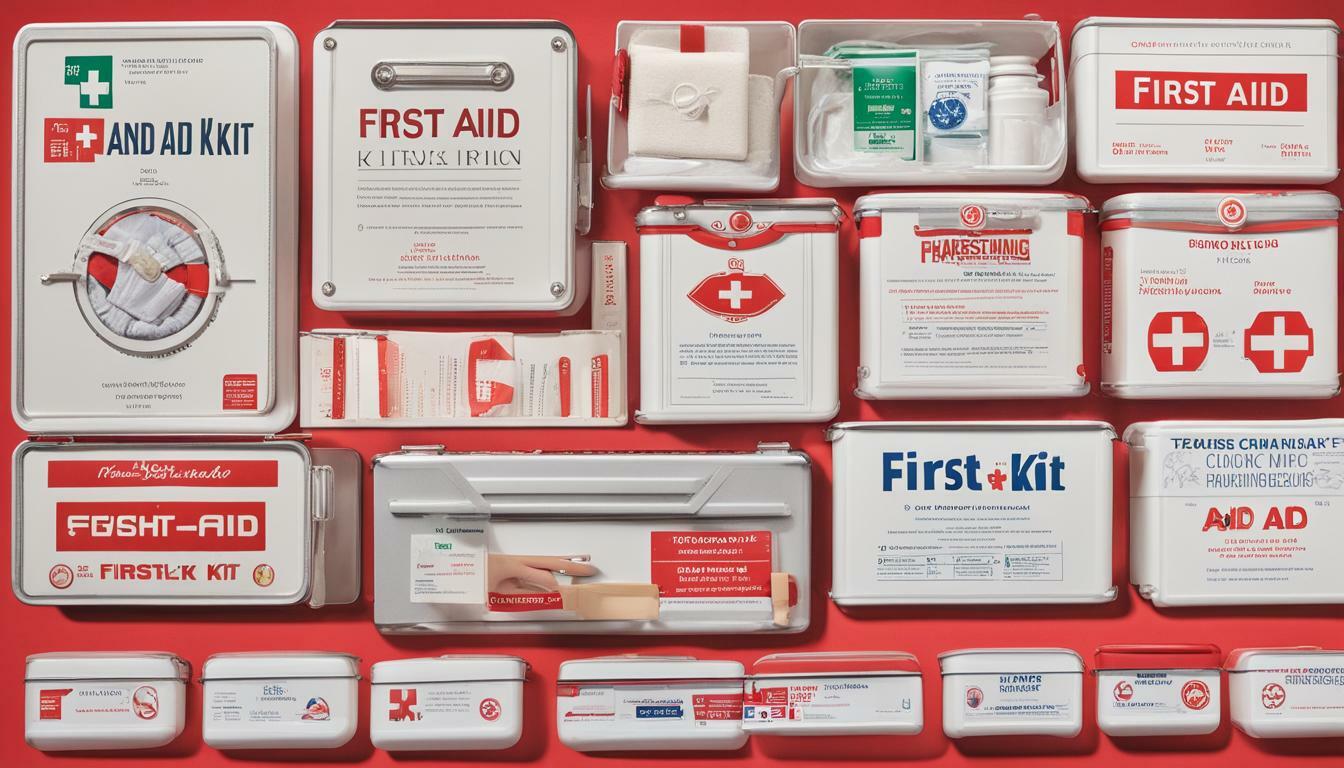
Evolution of First Aid Kit Packaging: Trends and Designs
First aid kit packaging has come a long way since its early days. As we have explored throughout this article, designs have evolved to meet the changing needs and demands of users. From basic functionality to modern trends and innovative features, packaging has become an integral part of first aid kits.
It is essential to consider trends and designs in first aid kit packaging to enhance usability and accessibility. Colour-coding, clear labeling, and compartmentalisation are just some of the features that have become popular in modern designs. Additionally, sustainability has become a critical factor, with eco-friendly materials and recycling programmes taking centre stage.
The Importance of User Feedback
Designers are taking into account user feedback, ergonomics, and accessibility considerations to create user-friendly and inclusive designs. These considerations have led to customisable compartments, compactness, and waterproofing features specifically designed for the diverse needs of users.
Technology in First Aid Kit Packaging
The integration of technology in first aid kit packaging has enhanced functionality and usability. Smart sensors, digital guides, and NFC (Near Field Communication) are just some of the features that have improved the experience of using a first aid kit. As technology continues to evolve, we can expect even more exciting developments in the future.
Designs for Specific Use Cases
First aid kit packaging has become tailored to specific use cases, including outdoor activities, travel, and workplace safety. Each scenario demands unique packaging designs that cater to the specific needs and requirements. As we continue to understand the needs of users better, we can expect more specialised designs to emerge.
The future of first aid kit packaging design is exciting. Emerging technologies and advancements in materials will lead to new possibilities. User feedback will be critical in shaping the future of packaging design. With designers focusing on functionality, usability, and sustainability, we can expect first aid kit packaging to continue to evolve for the better.
In conclusion, considering trends and designs in first aid kit packaging is vital. It is an area that has undergone significant transformation, and we will undoubtedly see even more exciting developments in the future. With a focus on user feedback, sustainability, and innovative solutions, first aid kits will become more accessible, functional and user-friendly.
